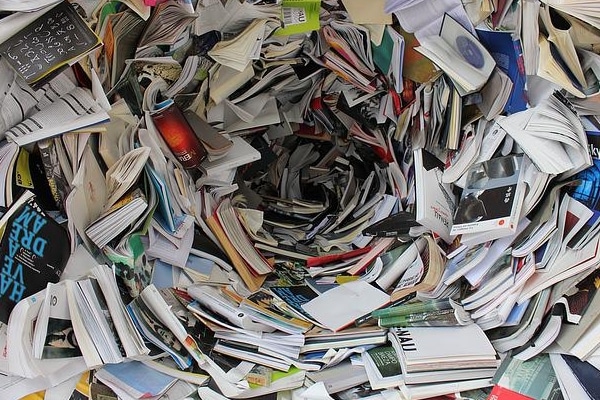
I always smile when clients ask me, “Am I a hoarder?” As a Professional Organizer, I’ve been in many homes and offices and helped a wide range of people with their spaces. And while it’s true that many people have a lot of unnecessary stuff they hold on to, a hoarding disorder is pretty rare. In fact, it affects only about 2-6% of the population.
What is Hoarding Disorder?
While certain reality television shows refer to the word “hoarder,” the proper term is “a person with hoarding disorder.” (We focus on the person, not their condition.) The 5th version of the Diagnostic and Statistics Manual (DSM-V) includes hoarding disorder as a unique disorder in the class of obsessive-compulsive disorders.1 According to the book Buried in Treasures2, hoarding disorder is associated with three key features:
- The person accumulates objects that most people consider of limited value, and the person has a great deal of difficulty parting with those items.
- The quantity of possessions restricts the use of living space.
- Acquiring, owning, and discarding possessions causes considerable stress in a person’s life.
While someone may not have hoarding disorder, they may have hoarding tendencies. These can be part of other mental health issues such as depression, anxiety, obsessive-compulsive disorder, ADHD, or operational stress injuries such as PTSD.
If you feel any of these relate to you, a friend, or a relative, visit Anxiety Canada. You can learn more about the disorder, discover self-help strategies, and find links to professionals who deal with hoarding disorder. In addition, check out the Canadian Association for Mental Health (CAMH) for additional resources or talk to your primary healthcare professional.
Do You Have Hoarding Disorder?
Professional organizers can’t (and don’t) diagnose mental health issues like hoarding disorder. However, considering the low rate of hoarding disorder, clients most likely have a hoard of stuff and need to declutter. Since clearing and organizing a hoard of stuff can be daunting and overwhelming, you may not know where to start. In a nutshell, here are the steps I recommend:
- Get help from a health professional if you identify with aspects of hoarding disorder or other mental health conditions that include hoarding tendencies.
- Remember that you are not a hoarder. You might have tendencies or a disorder, meaning you need to do things differently from what others consider “typical.”
- Set a goal. It can even be as small as clearing one trash bag a day or working for 15 minutes at a time. Your goals need to suit you and your lifestyle.
- Follow the C.L.E.A.R. process to help you decide what to keep and where to store those items.
Do you fall into the category of people with a hoard of stuff? Do you need help decluttering and organizing your space? We’re here to help! Contact the Out of Chaos team today.
References
1. “Table 3.29, DSM-5 Hoarding Disorder – Impact of the DSM-IV to DSM-5 …” National Library of Medicine, National Center for Biotechnology Information, June 2016, www.ncbi.nlm.nih.gov/books/NBK519704/table/ch3.t29/
2. Buried in Treasures by David F. Tolin, Randy O. Frost, Gail Stekettee, Oxford University Press, 2007.
